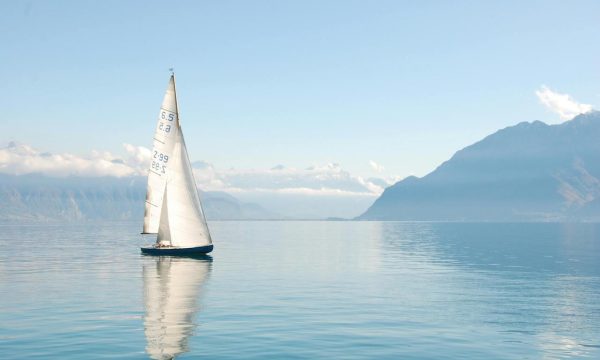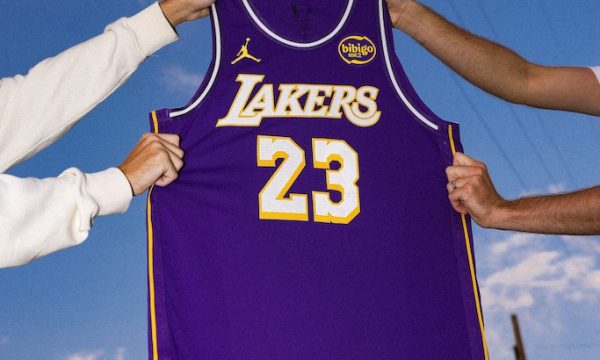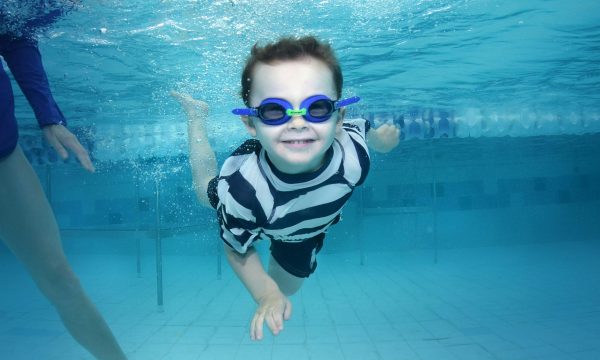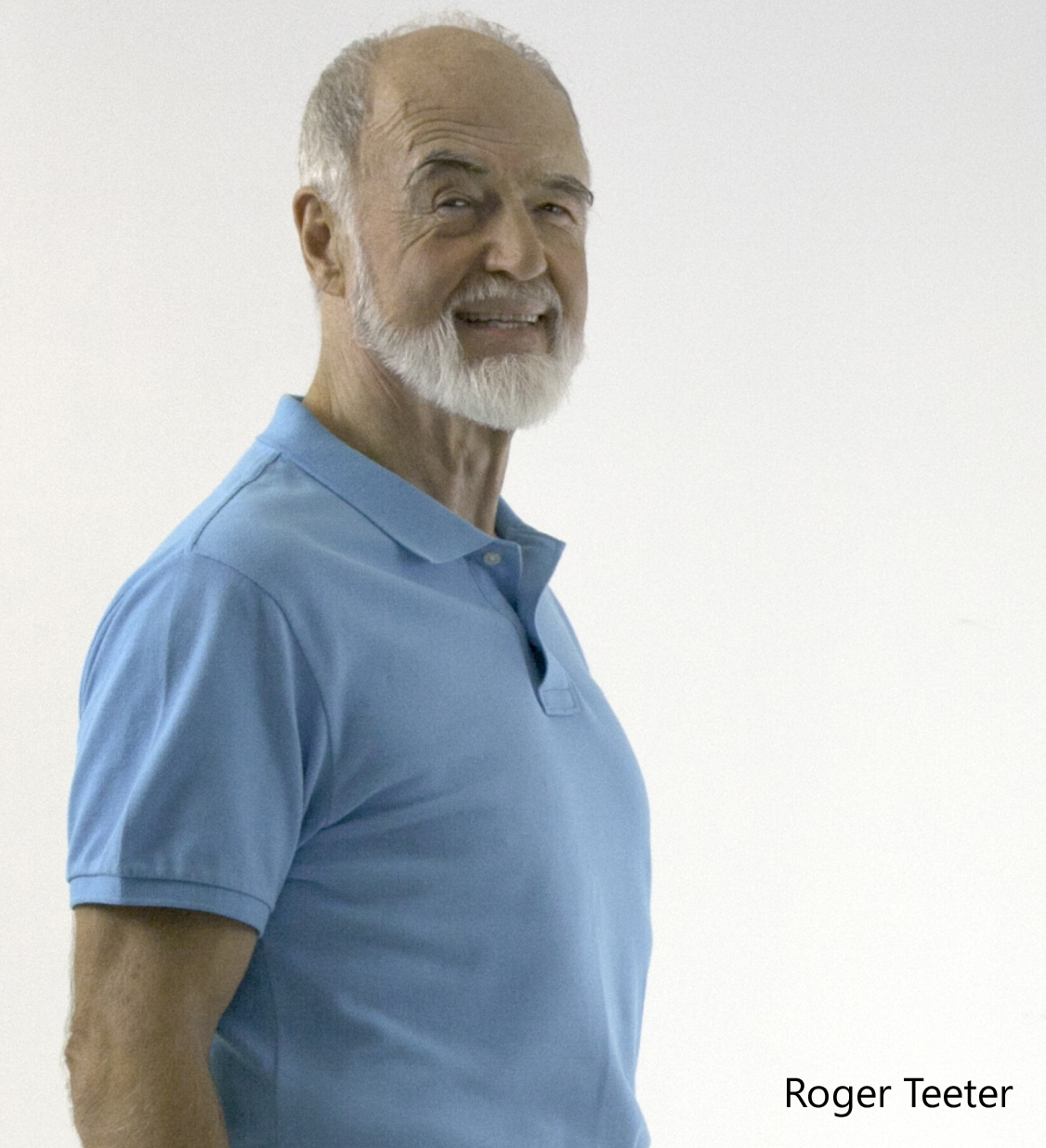 About 31 million people in the U.S. alone suffer from some kind of lower back pain. The risk for experiencing low back pain increases as you age, especially if you’re overweight or don’t exercise. The condition disables more individuals younger than 45 than any other cause, and forces 13 million people to visit the doctor annually. All the doctors’ visits and treatment plans make for an expensive public health issue. People spend about $50 billion annually to find relief. And relief is what you’re looking for when you suffer from chronic back pain. As someone who experiences this condition, it inspired me to research available treatments and the prognosis for a pain-free future. My search led me to “Teeter Hang Ups,” one of the top-rated inversion tables available on the market today. With a last name that is aptly suited for his product that resembles a “Teeter-Totter,” Teeter Hang Ups founder Roger Teeter, has dedicated his life to helping others who suffer from back pain find health and happiness, living a pain-free life through inversion therapy. “How did I become such a proponent of Inversion? Over 35 years ago, I dealt with a life-changing injury to my back. I was in a lot of pain — and discovered Inversion as the only form of therapy that helped. I now have been pain free for thirty years and credit my health to a daily work out program that includes inversion therapy. I am in my mid-70’s — I credit inversion for giving me my life back!” Roger says.
About 31 million people in the U.S. alone suffer from some kind of lower back pain. The risk for experiencing low back pain increases as you age, especially if you’re overweight or don’t exercise. The condition disables more individuals younger than 45 than any other cause, and forces 13 million people to visit the doctor annually. All the doctors’ visits and treatment plans make for an expensive public health issue. People spend about $50 billion annually to find relief. And relief is what you’re looking for when you suffer from chronic back pain. As someone who experiences this condition, it inspired me to research available treatments and the prognosis for a pain-free future. My search led me to “Teeter Hang Ups,” one of the top-rated inversion tables available on the market today. With a last name that is aptly suited for his product that resembles a “Teeter-Totter,” Teeter Hang Ups founder Roger Teeter, has dedicated his life to helping others who suffer from back pain find health and happiness, living a pain-free life through inversion therapy. “How did I become such a proponent of Inversion? Over 35 years ago, I dealt with a life-changing injury to my back. I was in a lot of pain — and discovered Inversion as the only form of therapy that helped. I now have been pain free for thirty years and credit my health to a daily work out program that includes inversion therapy. I am in my mid-70’s — I credit inversion for giving me my life back!” Roger says.
Roger and his wife Jennifer first heard about inversion at a water ski tournament in 1980. At the time, Roger was suffering from severe back problems resulting from his job as a professional water skier and from an auto accident. On some of the worst mornings, Roger would have to crawl to the bathroom to run hot water over his back so that he could function throughout the day. He also wore a large brace with metal rods to support his back every time he skied for 5 years! Roger finally discovered that by inverting, he was able to relieve his back pain and begin on the road to recovery. Roger benefited so much from inversion therapy that he decided to start a company dedicated to manufacturing high quality inversion products. Sky’s the Limit (STL) entered the inversion market in 1981 with Hang Ups brand gravity boots and inversion tables, now generally known as Teeter Hang Ups. Teeter is now entering its 30th year of business, and is widely recognized as the leader, innovator and quality pioneer within the inversion equipment market. Ever ready, and more than willing to teach and promote the benefits of inversion therapy, I caught up with Roger during his busy schedule and talked to him about his life-changing product.
I learned a lot from your videos and infomercials. On top of that, I found out that you suffer from back pain yourself. Did you ever undergo back surgery before discovering inversion?
No, I did not. I had the back problem from a previous job where I was designing sports equipment that happened to be very, very hard on my back. I just had some inflamed joints because of the type of work that I was doing, I kept inflaming it and re-inflaming it. That went on five years. I did try everything medically that anyone suggested, but nothing really worked. But a part of it was the fact that I didn’t back off on what I was doing, other than that I had a brace with steel reinforcement that I wore anytime I was working for the five-year period. Anyways, the inversion was the only thing that made a significant difference.
I was fascinated because I’ve been having some back problems myself over the last couple of years. And mine is in my lower L4/L5 — those regions. I know that my problems have gotten better since I’ve been inverting. In fact, a friend of mine had suggested before I got your table, to hang by my arms. And I was hanging for a while, and I found that I got some benefits and relief from that. So when I got the table, I started using it and I’ve had definite benefits. But in your opinion, do the benefits outweigh the risks of using an inversion table?
What do you perceive the risks to be?
Well, they talk about the blood rushing to your head, and those types of things that go with hanging upside down for periods of time. That’s all that I’ve really heard that could be a problem.
There was some speculation about 33 to 34 years ago. A Dr. Goldman and Dr. Klatz, who had just graduated from medical school and were interns, did studies when inversion was a big fad. Inversion with the boots. And they thought; “Eh, maybe this isn’t good for everybody.” So they got 20 of their buddies — nobody had ever inverted before — and they hung them fully upside down with boots, and measured their blood pressure, eye pressure, and so on. The systolic pressure went up about 20 points on average. So they put out a press release the next day that said they thought there was reason for caution; that if somebody was on the verge of a stroke, it might push them over. And the press ran with that, because they had been printing nothing but good news about inversion for the last two years. But the bad news got great coverage and killed the market completely. To Goldman and Klatz’s credit, they were absolutely shocked at what the media did. They ran another study that was published three years later, and that’s the one you want to look up, where they basically reversed everything. The conclusion was you had more risk of a stroke right-side up weightlifting or playing tennis than you do being inverted.
So as far as I know, there’s never been a single case of cardiovascular incident or stroke related to inversion. This goes back to the body being very well-designed. Here’s what we tell people, the most general statement: the more the angle, the more the benefits. But very, very, very important caveat: that is that you must be totally relaxed and comfortable at whatever angle you’re at. Once you start to tense up, you’re fighting the benefit. If you’re not comfortable with whatever angle you pick, back up. Go to a lesser angle where you are totally relaxed. Let it all go, and as your body learns to accept this inversion business, you can add more and more angles. It’s a way to train the autonomic nervous system.
 When you invert, do you fully invert or partially invert?
When you invert, do you fully invert or partially invert?
Fully invert, absolutely.
For how long of a period of time?
Well, I do it every day — probably for a total of six or seven minutes. But I’m not hanging out like a sack of potatoes. I’m not doing exercises. Inversion, to me, is decompression, relaxation. But when you’re inverted, you want to mobilize your body. You elongate 1 to 2 inches. That’s a real number. I’m not exaggerating.
On the infomercial, you say that you can effectively decompress all of your weight-bearing joints in three to five minutes. Now is that three to five minutes at one time, or in increments?
It can be, I’d say, at one time. But in reality, if you invert every day, the probability is you’re going to decompress. Every time you invert, you’re going to decompress faster. And I would say that I probably have the full decompression in much less than a minute. But that doesn’t mean I’m done. Because one thing that happens is when all those joints open up — OK, if there’s a misalignment, if you’ve got scoliosis, it will help to straighten it out, or you have spondylolisthesis — that’s a vertebrae that’s pushed out of alignment — it will go back in place in time. It depends on the problem. You want to give some time inverted so that the disc can pick up additional moisture to rehydrate. Inversion’s very effective. I know of a very small study of about 10 people that had significant scoliosis and inversion — it’s not going to cure it, but it can maintain it. And if you do it on a regular basis, there’s a very high probability the scoliosis will not progress. Or it’ll certainly progress a heck of a lot slower. So there’s no question about scoliosis being straightened out to a degree with inversion. Then when you’re upright it will creep back, but it’s a way to maintain on a daily basis.
I know I get benefits from my therapy, because after a long day, my back is kind of hurting so when I get on the inversion table and hang through a few sets, I feel the relief. But my ankles have been hurting.
Which table do you have?
I have the EP-560.
You have the ankle clamps front and back. And they’re fairly soft.
Yes.
A couple of things that sometimes you don’t always think of: if you’re wearing lace-up shoes, it can be the knot on your lace that is the point of pressure, and you may not even realize that it’s a point of pressure. I think you should wear shoes — that’s helpful, I think. And make sure that they’re positioned correctly. Sometimes when you invert, because they rotate, they roll to an uncomfortable position. But if none of those things are an issue, and you don’t have any ankle injuries, previous ankle injuries, the real issue gets to be that your body just isn’t designed to hold your body weight on the top of your feet. But your body will adjust.
Yes, that’s what I was wondering — if it will adjust.
Absolutely. Your body gets toughened in. And in reality, when I said three to five minutes, I do want to clarify that: when you said different sessions, I’m thinking of you saying one in the morning, one after work, one at night, and do a minute each. But if you’re doing three to five minutes you could hang for a minute, come back to horizontal for a minute or two. And then go right back. And have an accumulation of three to five minutes within a given 10-minute or 12-minute session. With as many breaks as you want. In fact, oscillate – just rock back and forth on the table. Once you get the balance right, you can, just with one arm or so, rock back and forth. And that’s particularly good for stress relief, and circulation improvement for both blood and lymphs.
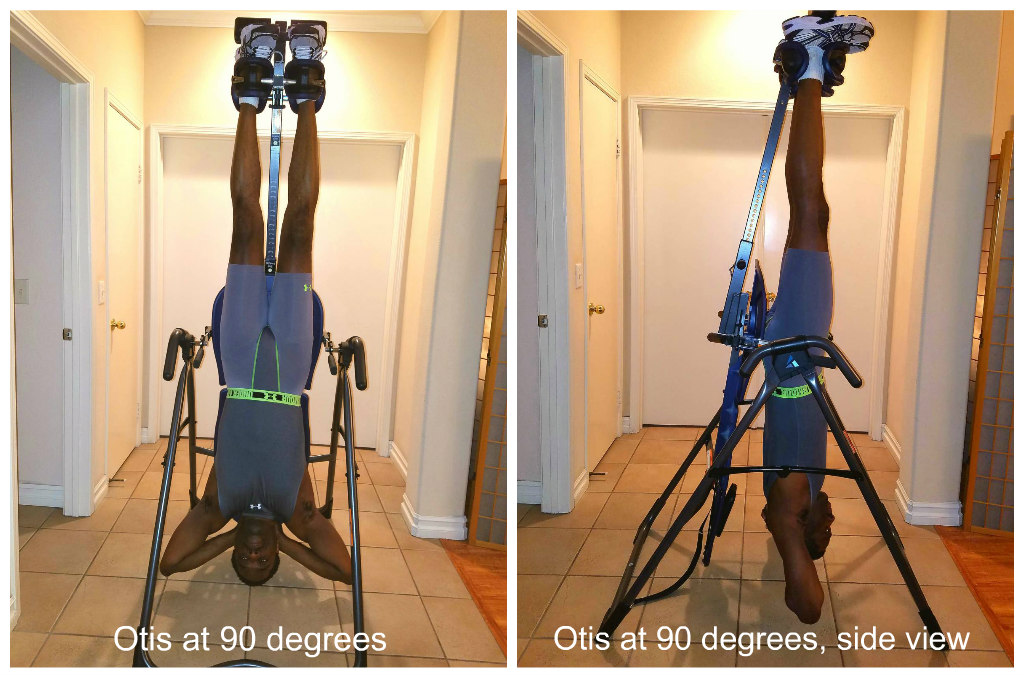 So you’re saying my body will get used to it?
So you’re saying my body will get used to it?
It’ll get used to it, but if you’re starting to feel your feet hurt or whatever, just take a break. You don’t have to get off the table, in fact. Probably just as well that you don’t; just go to horizontal for a minute or so, and then try and get in three to five minutes. And when I say three to five minutes, what we mean is say five minutes at 60 to 70 degrees, or three minutes of full inversion. I fact, it’s probably better to mix it up — some pelvic tilts, some rotation. You can even do some inverted squats — kind of pull your butt up when you’re inverted. Now, you have to be in full inversion to do that.
The whole idea is to move your body around. Those joints are opened up. And by mobilizing your body, they will realign if a realignment is any part of the problem. And Google U.S. Army and inversion, and you should be able to get a video where it shows Fort Benning, GA, home of the US Army Rangers, having everybody in basic training decompressing after a hard day of training. And that was because with the running, jumping, twisting and turning and basic training, people were getting things knocked out of alignment. They were losing training because they’d have joints swollen up by the next morning. It was a real problem, so they had everybody hang five minutes at the end of the day, and a lot of those misalignments would self-correct. The people who were upside down would pass a medicine ball back and forth down the line. The whole idea was really just to move the body around while it’s hanging upside down. There is also a letter of endorsement from Lieutenant Colonel Rieger stating in part; “We believe in the value of inverted decompression and mobilization and appreciate your efforts to produce safe and effective equipment…”
So I’m kind of getting the idea that if you’re going to do inversion, it should be three minutes at a time instead of breaking it up into like a minute and a half, or minute increments. People will get better results hanging longer.
It’s a better result if it’s all within the same session. I mean, rather than a minute in the morning, a minute at night, a minute after work, and a minute before bed. If you want the two most important times, if you have trouble waking up in the morning, I mean it is one heck of a fast wake-up because of the extra oxygen to the brain. It’s certainly as effective as coffee, and heck of a lot faster.
I usually decompress in the morning and at night. I started out hanging in 45-second increments. Now, I’ve worked up to 3 minutes at a 60 degree angle.
It’s a little different job in the morning. You’re stiff, and the reason you’re stiff in part is ligaments get stiff really quickly. And you’ve been sleeping; you have very little movement during the night, compared to being upright, so the ligaments are kind of stiff. And when you invert, you’re looking to mobilize those ligaments and kind of get them to wake up, and the body to straighten out – especially if you sleep in a half fetal position like I do. Then you get up in the morning; have trouble standing straight, and inversion just blows that away in seconds. I mean, certainly in the morning — maybe one minute of full inversion will be plenty. You’re just trying to wake up the ligaments and muscles. Now, after work, I would go for the three to five minutes, but if you skip the after work one, be sure to do the one immediately before bed. That’s really the most important, because you do lose that half an inch of height during the day, and there’s stress in your body. You get an accumulation of toxins, and it helps to flush the lymph system. It’s not just the joints, it’s helping the whole body, especially the limb system, to get rid of toxins and stress from the day. It helps you sleep better. There are some extra benefits to doing it immediately before bed.
As a card-carrying member of the Teeter Hang Ups Inversion Table club, this writer is someone who has experienced the benefits and therapy of inversion firsthand. I have discovered that it is certainly a viable and effective alternative to back surgery. Over the past 2 ½ months I have been using the table, I have noticed a significant reduction of my pain level and when I have been extra active physically, a session on my inversion table provides me with much needed comfort and pain relief. In addition, the incredible precision balance of the table makes the control of your movement to inversion virtually effortless. And although I am not yet pain-free, I am optimistic that a pain-free lifestyle is in my future through continued inversion therapy. Kudos to Roger Teeter and his team for their commitment to the millions of people who suffer from debilitating back pain. This is one “Hang Up” I don’t mind having…



